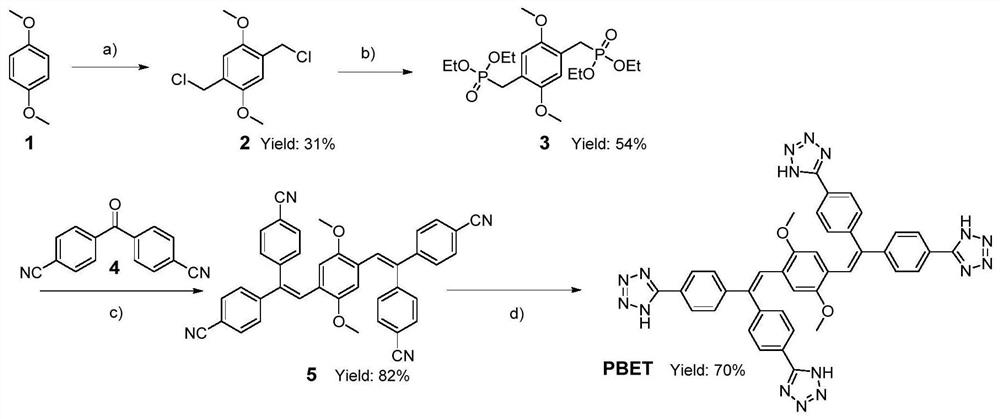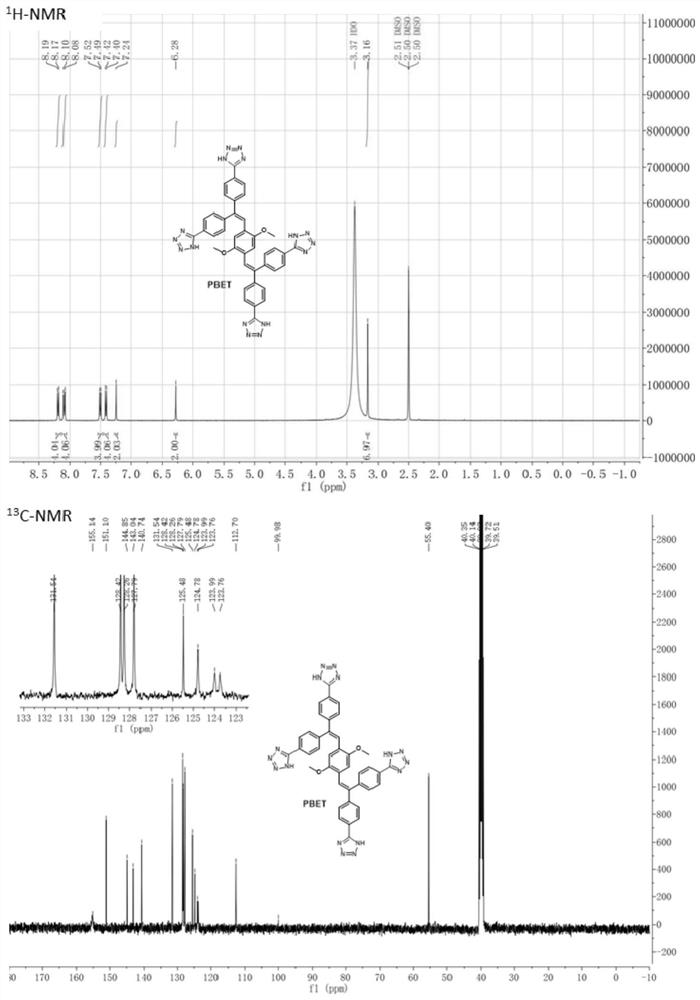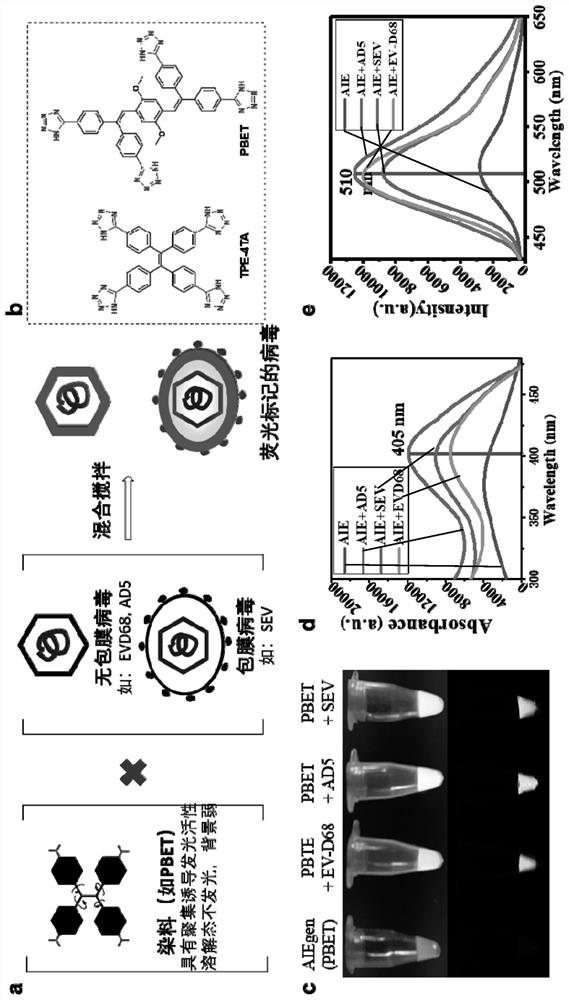Fluorescent dye for labeling virus, preparation method and application
A technology of fluorescent dyes and viruses, applied in the direction of luminescent materials, azo dyes, organic dyes, etc., can solve the problems of high background, fluorescent molecules do not have high brightness and anti-photobleaching, loss of virus resolution, etc., to achieve high efficiency, Facilitate real-time tracking analysis, high-resolution effect
- Summary
- Abstract
- Description
- Claims
- Application Information
AI Technical Summary
Problems solved by technology
Method used
Image
Examples
Embodiment 1
[0075] Synthesis of PBET dye molecules (synthetic route reference figure 1 )
[0076] a) Synthesis of compound 2. To a solution of 1,4-dimethoxybenzene (10.0 g, 72.3 mmol) in 1,4-dioxane (30 mL) was added aqueous formaldehyde (38%, 5 mL) and paraformaldehyde powder (3.0 g, 99.0 mmol). The resulting mixture was stirred at 95°C and concentrated hydrochloric acid (2 x 5 mL) was added at 30 min intervals. Afterwards, continue heating for 2 hours, and then add 30 mL of concentrated hydrochloric acid. The resulting mixture was cooled to room temperature to give a white precipitate which was collected by filtration and dried under vacuum. The crude product was recrystallized from hot acetone to give white precipitated compound (5.0 g) in 31% yield. 1 H NMR (300 MHz, CDCl 3 ): δ6.93(s,2H),4.64(s,4H),3.86(s,6H).
[0077] b) Synthesis of compound 3. To a 100 mL Schlenk tube, compound 2 (7 g, 29.8 mmol) and triethylphosphorous acid (21 mL, 127 mmol) were added. The reaction mixt...
Embodiment 2
[0081] Fluorescent labeling of live virus
[0082] AD5 adenovirus (Adenovirus serotype5: AD5), Sendai virus (Sendai virus BB1 strain: SEV), enterovirus (Enterovirus D68: EV-D68) were carried out labeling detection ( image 3 ). Fluorescence excitation and emission spectra were recorded on a Perkin-Elmer LS 55 spectrofluorometer; fluorescence photos were taken by an IVIS spectral in vivo imaging system ( BL, PerkinElmer) records.
[0083] Virus culture: EV-D68 enterovirus was prepared in RD cell culture. AD5 adenovirus was incubated with virus suspension in 293A cell culture. When the cells showed 80% lesion effect, the cell culture medium was subjected to three freeze-thaw cycles. Cell debris was then removed by centrifugation at 2000 xg for 15 minutes at 4°C. Then ultracentrifuge at 110,000×g for 2 hours to harvest the culture supernatant containing virus. SEV Sendai virus was propagated in 10-day-old embryonic eggs for 48 hr. Subsequently, the virus in the allantoic f...
Embodiment 3
[0086] Quantitative Analysis of Fluorescently Labeled Live Viruses
[0087] Such as Figure 4 As shown in , the concentration of PBET dye molecules (prepared in Example 1) in the final solution was set to be 5 micromolar, and the final concentration of AD5 adenovirus was changed respectively. It was found that the fluorescence intensity at 510 nm increased linearly with the increase of virus. Conversely, when the final concentration of AD5 adenovirus is set and the concentration of PBET dye is continuously increased, it is also found that the intensity of fluorescence at 510 nm has a linear increase process. This shows that the generation of fluorescent signal comes from two parts: virus and dye. And using a similar method, it is expected to develop a virus concentration calibration method based on fluorescence quantification.
[0088] Such as Figure 5 As shown in , the concentration of PBET dye molecules (prepared in Example 1) in the final solution was set to be 5 micro...
PUM
| Property | Measurement | Unit |
|---|---|---|
| wavelength | aaaaa | aaaaa |
Abstract
Description
Claims
Application Information
 Login to View More
Login to View More - Generate Ideas
- Intellectual Property
- Life Sciences
- Materials
- Tech Scout
- Unparalleled Data Quality
- Higher Quality Content
- 60% Fewer Hallucinations
Browse by: Latest US Patents, China's latest patents, Technical Efficacy Thesaurus, Application Domain, Technology Topic, Popular Technical Reports.
© 2025 PatSnap. All rights reserved.Legal|Privacy policy|Modern Slavery Act Transparency Statement|Sitemap|About US| Contact US: help@patsnap.com



